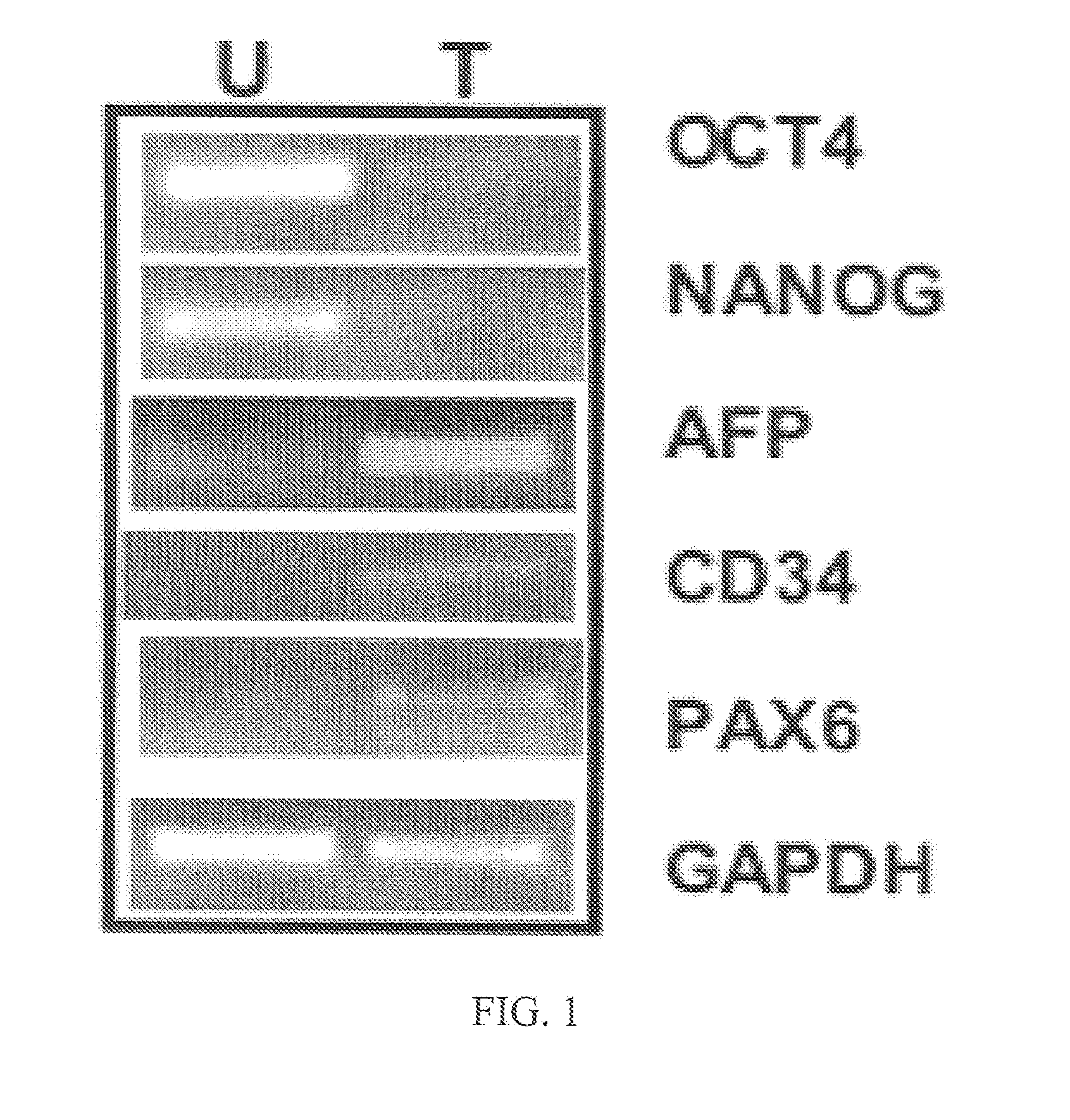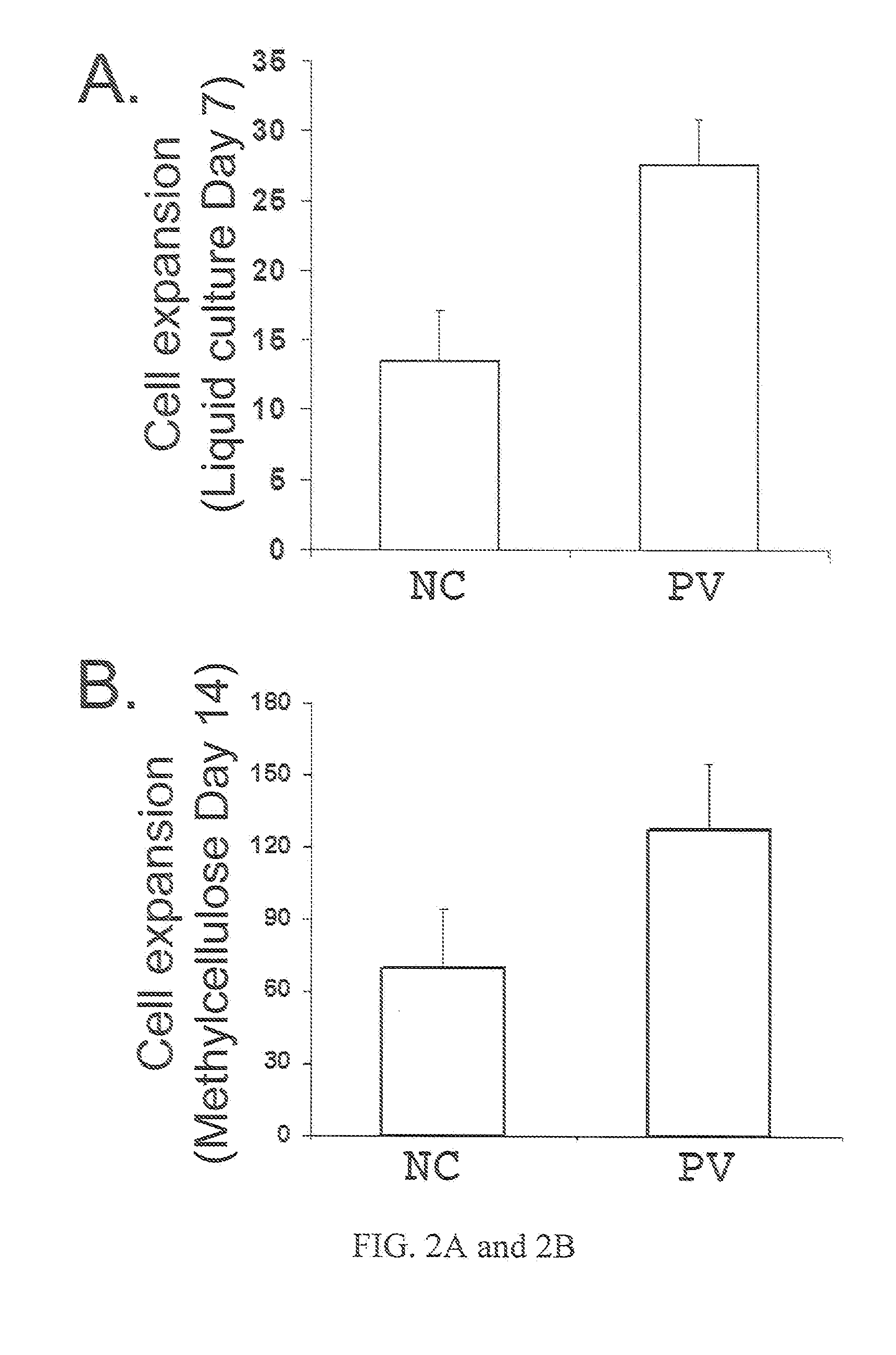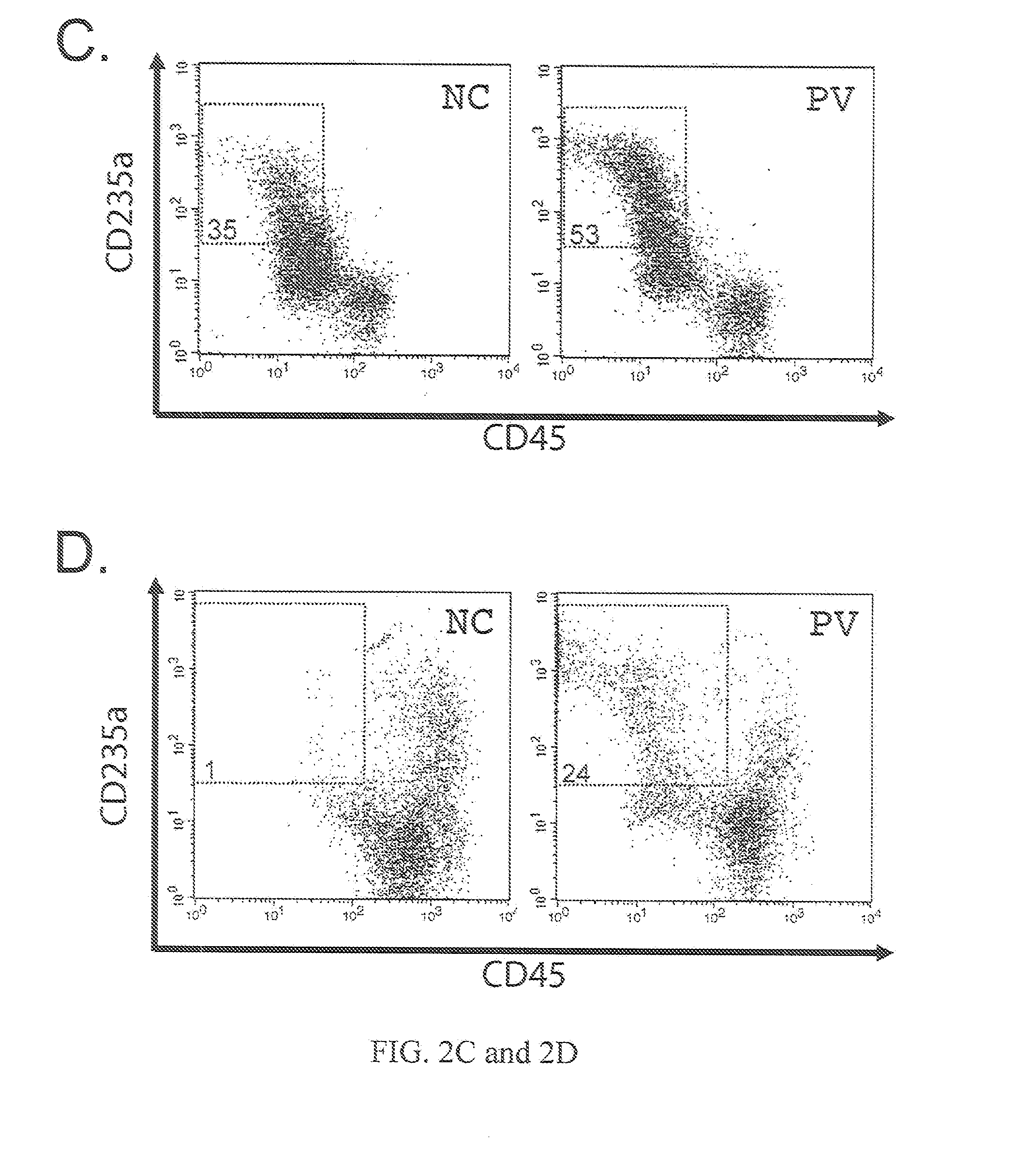Reprogramming Blood Cells to Pluripotent and Multipotent Stem Cells
a stem cell and reprogramming technology, applied in the field of stem cells, can solve the problems that the treatment of csf could affect the reprogramming process or the properties of blood cell-derived ips cells, and achieve the effect of improving the reprogramming process
- Summary
- Abstract
- Description
- Claims
- Application Information
AI Technical Summary
Benefits of technology
Problems solved by technology
Method used
Image
Examples
example 1
Human CD34+ Cells and Reprogramming by Gene Transduction
[0109]Culture media and conditions for expanding human ES cells and iPS cells: Media and culture conditions for derivation, expansion and karyotyping (G banding) of human iPS cells are described previously (Mali et al. (2008) Stem cells 26:1998-2005).
[0110]Frozen human CD34+ cells from CB and adult BM are purchased from AllCells and Poietics (now part of Lonza). Previously frozen PB CD34+ cells from two patients registered at the Johns Hopkins Center of Chronic MPDs (Moliterno et al. (2008) Exp Hematol. 36:1480-86) are also used in this study and from whom written informed consent was obtained. Isolated PB CD34+ cells after G-CSF mobilization are purchased from AllCells and used as a normal control for analyzing gene expression. Four classic retroviral vectors pMXs-Oct4, pMXs-Sox2, pMXs-K1f4 and pMXs-c-Myc encoding (mouse) reprogramming factors constructed by the laboratory of Dr. Yamanaka are obtained from Addgene (www.addgene...
example 2
Immuno-Staining of Undifferentiated iPS Cells and their Derivatives
[0112]TRA-1-60 live staining: TRA-1-60 antibody (Millipore, 1:300) and Alexa555-conjugated secondary antibody anti-Mouse IgM (Invitrogen, 1:400) are diluted in hES medium and added into reprogramming plate. The plate is incubated in 37° C. for 1 hour before medium is changed to fresh conditioned medium. TRA-1-60 positive colonies are identified under an inverted fluorescence microscope.
[0113]Immuno-staining of iPS clones for undifferentiated markers and of differentiated cells after embryoid body (EB) formation are performed as previously described (Mail et al. (2008) Stem Cells 26:1998-2005; Chen et al. (2008) Cell Stem Cell 2:345-55; Yu et al. (2008) Cell Stem Cell 2:461-71).
example 3
Teratoma Formation Assay of Pluripotency
[0114]Three to five million iPS cells are harvested by Collagenase IV (Sigma) digestion, washed with PBS and resuspended in 200 μL diluted (1:1) Matrigel solution. Cells are injected intra-muscularilly into Rag1− / −γC− / − mice or other improved immuno-deficient mice with a further reduced level of natural killer cells. Tumors are excised 6-10 weeks after injection. Histological processing is performed as previously described (Mail et al. (2008) Stem Cells 26:1998-2005; Chen et al. (2008) Cell Stem Cell 2:345-55; Yu et al. (2008) Cell Stem Cell 2:461-71). Teratoma RNA is extracted using Trizol reagent (Invitrogen) according to manufacturer's recommendation. RT-PCR of AFP, CD34, PAX6, OCT4 and NANOG human genes was carried out as previous described (Mail et al. (2008) Stem Cells 26:1998-2005; Chen et al. (2008) Cell Stem Cell 2:345-55; Yu et al. (2008) Cell Stem Cell 2:461-71).
PUM
| Property | Measurement | Unit |
|---|---|---|
| myeloproliferative disorders | aaaaa | aaaaa |
| cell surface | aaaaa | aaaaa |
| Tg | aaaaa | aaaaa |
Abstract
Description
Claims
Application Information
 Login to View More
Login to View More - R&D
- Intellectual Property
- Life Sciences
- Materials
- Tech Scout
- Unparalleled Data Quality
- Higher Quality Content
- 60% Fewer Hallucinations
Browse by: Latest US Patents, China's latest patents, Technical Efficacy Thesaurus, Application Domain, Technology Topic, Popular Technical Reports.
© 2025 PatSnap. All rights reserved.Legal|Privacy policy|Modern Slavery Act Transparency Statement|Sitemap|About US| Contact US: help@patsnap.com



